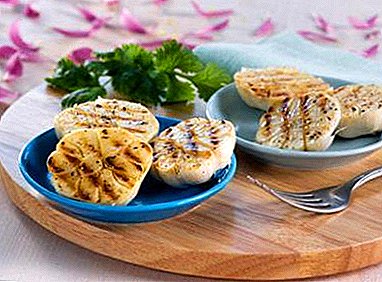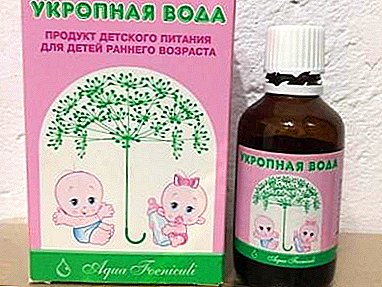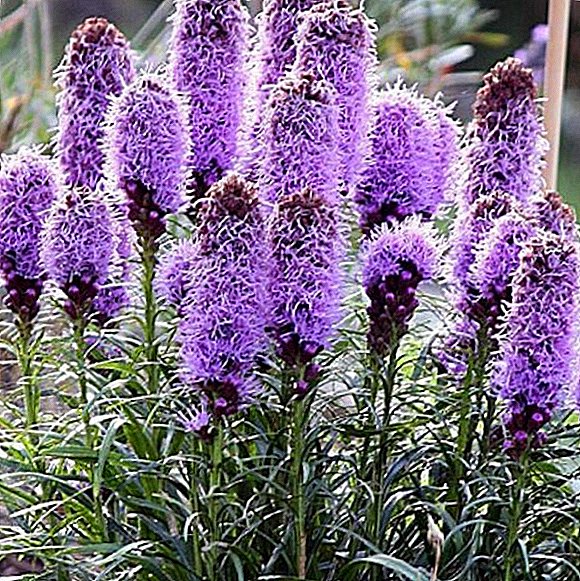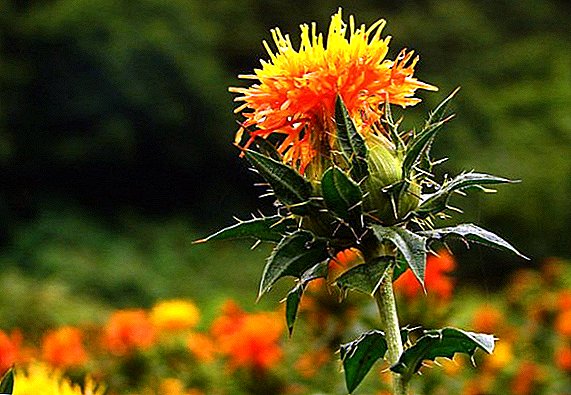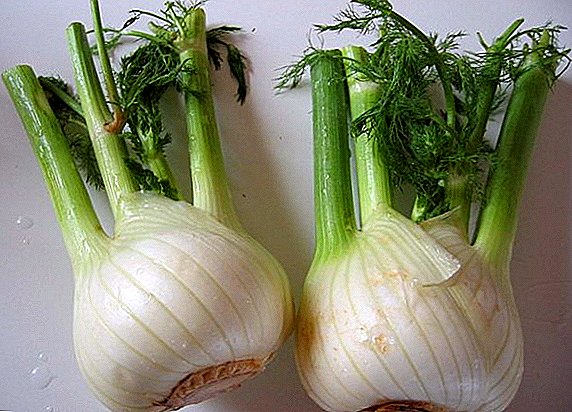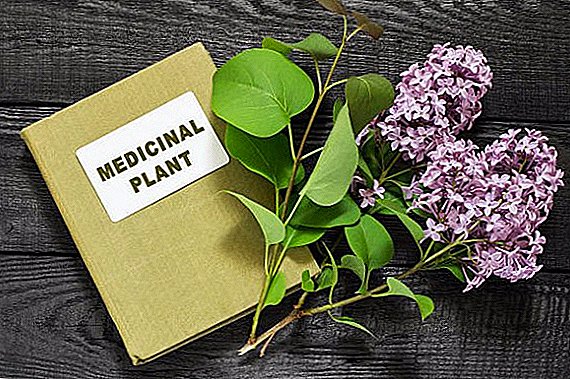
Pasture is farmland, which mainly grows grass and is used for grazing of herbivores. Every farmer knows that grazing on pastures is much more useful and efficient than artificial feeding. But there are very few natural places where you can graze animals and not be afraid that they will get injured or not be poisoned. Therefore, there is a need to create artificial land for livestock.
Soil requirements
The territory for grazing land is chosen in such a way that it is near the farm. First of all, dry pasture is allocated for pasture; on marshy and forest soils, as a rule, herbs grow with a low content of useful elements, which often leads to various diseases, especially in young.

The soil should be loamy, fertile or moderately fertile, with a low level of acidity.acidic soils always lime. This soil is most suitable for growing most types of green fodder.
In spring, pasture soil needs to be harrowed, this procedure covers moisture and destroys weeds. Then the primer is rolled by a water-filled roller to create a dense bed for the seed.
Important! From the terrain and soil quality depends on what kind of crop should be grown on the site. In order not to be mistaken with the choice of plants, it is best to seek help from a specialist.
Grazing plants
Fodder plants for animals that are grown in pastures, are very diverse. Next, we consider the most significant pasture forage crops. 
Cereals
Cereals are the most common forage plants on cultivated lands. There is a very large number of cereals that are grown on cultivated pastures. But we consider the most common types.
Such a cereal plant like sorghum can be used for green fodder, silage and hay.
One of them is feather grass. This plant is common in steppe and forest-steppe areas and has more than 300 species worldwide and about 80 in our country. It is well consumed by all kinds of livestock.
The most common types are: Lessing, feather hair, dneprovsky and Sarepta feather grass, known to most as tyrsik. But the most prevalent of these species is the Lessing feather grass. This species is not only dominant, but also contains a larger amount of nutrients than the rest of its relatives.

This herb is best eaten by animals. until the end of its bloomwhich begins at the end of June, beginning of July.
The hairy dog is the second most common species, but its difference from others is that it blooms in late summer, thereby maintaining its nutritional value longer and attractive to livestock. 
Tipchak or Welsh fescue (also under this name imply various types of fescue) - common pasture herbage, contains a relatively large amount of protein, no more than 20 cm in height. 
The fescue is eaten by all kinds of livestock, but most of all he liked the sheep and the horses. This herb is resistant to drought, grows well after eating animals. It often winters with green leaves, which increases its value in winter and early spring.
Meat - The green leaves of this grass do not grow rapidly during May and June, its height does not exceed 40 cm. Like most other forage green plants, it is best consumed until mid-summer, because then it gets coarse and loses its nutritional value.

Kostrets - has a high yield and can grow on any soil, well used by all types of herbivores. These qualities make this grass one of the best options for sowing pastures. Also, with periodic rain or watering, this plant remains juicy until the fall. Easily tolerates a moderate pasture load.

Bluegrass bulbous - a common culture about 20 cm tall, a quarter consists of protein, which grows well on pasture-devastated by domestic animals. The bluegrass begins to germinate immediately after the snow melts, and it dries already in the middle of spring. 
To preserve the nutritional value of herbs for animals for the winter can be preparing haylage.
Legumes
Legumes valued for high protein contentbut. Because of its chemical composition, these plants are the most valuable feed on pastures. In addition, legumes largely fertilize the land with nitrogen, which, in turn, has a positive effect on crop yields. From legumes on pastures there are various varieties of alfalfa, mountain clover, sainfoin, Karagana, kopechnik and many others.
Important! Caragana is forbidden to plant in places where dairy cows and calves will graze, because animals can get injured from thorns.Of alfalfa in our country most often you can meet sickle and Romanian. Both species recover well after grazing, but Romanian is more resistant to dry weather.

Mountain clover It is the most popular species among other fodder clovers, as it tolerates drought well and can be planted in the steppe area, it grows poorly on downed pastures. 
One of the most valuable leguminous forage crops is sainfoin. He gained great importance due to the huge content of nutrients. This plant is also frost-resistant, calmly tolerates dry weather and remains juicy throughout the summer. However, it is poorly resistant to grazing and is poorly restored after it.
Karagan - It is a small shrub about half a meter high. Only young shoots, which are not more than a year old, are of great feed value, since older bushes grow coarse and spines appear on them. Also a huge disadvantage of the Karagana is that it strongly litters the land, if you do not control its growth. 
Sedges, cattails
Sedge stopovidnaya - It is the most common forage representative of its family. The height does not exceed 20 cm, contains a large amount of protein and fiber, which contributes to the collection of greater muscle mass. The factor that such a plant increases muscle growth makes it indispensable in pastures, where they will graze "meat" animals. 
Also, sedge is resistant to grazing and heat, continues to grow and remain juicy throughout the summer. For the winter, only the tips of the leaves dry up, and they themselves remain green, this quality makes it an indispensable plant on a winter pasture.
Did you know? Sedge has about 2,000 species, but about 10 species are grown on pastures.Rogoz - This is a plant that grows only near the water and looks like a reed. In cattail contains a large number of necessary substances. But it is taken for food in May, June, as long as the leaves are young and juicy. By the middle of summer, the leaves at rogoza become coarse and rough.

Herbs
For grass can be attributed all herbaceous plants except cereals and beans. The value of forbs as food supply is secondary. But some representatives of the herbs in their nutritional value are not worse than legumes or cereals. In this group of grass stands there are a large number of asterites, umbellate and cruciferous, rosaceous, lipflower and other species.
Learn about the use of sunflower oil cake in agriculture.
Poisonous plants
The most dangerous for livestock are hemlock, cycuta, belladonna, cockle, wild rosemary, aconite, wolf's bast. To poisonous plants, which are most often found on pastures, include celandine, field poppy, steppe mordovnik, horsetail, legumes, zhivokost, hellebore, lilies of the valley, sundew, black hellebore, buttercups, Tauride wormwood and many others.
Mostly poisonous plants are common on wetlands and high humidity areas, as well as on pastures with rare grazing, and poor maintenance. 
Pasture preparation
Preparatory work begins in early spring. Such a procedure in order to properly use the area and prevent various injuries in livestock, poisoning by poisonous plants, etc.
Garbage collection and weed control
Before the creation of pastures, on which in the future cows, sheep, horses and other cattle will graze, from the territory it is necessary remove all trash (old brushwood, stones, bones, bottles, etc.), remove all weeds and poisonous plants.
It is necessary to cut down and uproot all unnecessary shrubs, because they will prune the ground and interfere with the growth of seeded forage grasses and contribute to poisonous. Also in the bushes often live mites and other parasites, complicating the life of cattle.
Together with the bushes, it is necessary to uproot the old sticking stumps, fill up the pits to avoid getting wounds and injuries. It is very important to remove poisonous herbs before the start of the season, for this they most often dig up the ground or use herbicides.

If there are wetlands at the site, they should be drained and sown with herbs, water pits should be filled up, if this is not possible, they should be blocked so that they are not used as a watering place.
Did you know? The Mediterranean is considered to be the birthplace of all legumes on the planet.
Fertilizer
Fertilize the soil at the site, as a rule, with mineral fertilizers. Last year's cow dung is evenly spread throughout the territory, because Excessive levels of nitrogen, ammonia and other elements in the litter interfere with the growth of feed..
Seeding grains and legumes
The main causes of seeding are the enrichment of the existing forage base with additional more nutritious herbs and an increase in density, which, in aggregate, contributes to a more productive use of the territory.

Fodder seeding is less costly than full sowing of the meadows, because it does not need to treat the soil. Early spring is considered to be the best time for seeding. Seeding can be carried out in the summer, but only under the condition of heavy rains.
Rules for the care of fodder herbs
Caring for fodder grasses is in their proper fertilization and periodic mowing. For leguminous crops, fertilizing with phosphate-potassium fertilizers is necessary at the rate of 60 kg per 1 ha, which is carried out in the autumn.
Fertilize cereals with mineral or nitrogen fertilizers at the rate of 35 kg per 1 ha. Fertilizing grass mixture, you need to consider the ratio of herbs. If you have more than half - it is legumes, then nitrogen fertilizers should be less, because a large amount of nitrogen negatively affects the root bacteria of legumes.
Rational use of pastures
In order to rationally use the territory, first of all, it is necessary to start grazing on time and finish it. In a wooded area, it is recommended to drive livestock to grazing, when the height of grasses reaches about 15 cm, and in the steppe and forest-steppe zones, such a level is about 10 cm.

Grazing should be carried out so that he ate young grass. Bleeding begins to carry out when the cereals go into the tube, and forbs and legumes side shoots are formed. End the bleeding should be when the cereals begins mid earing, well, the beans begin to bloom.
It is also necessary to stop grazing, if animals have already eaten about 80% of all grasses, otherwise the pasture yields will deteriorate greatly in the future. Finish offset a few weeks before the onset of frost.
If the season turned out to be fruitful and there is more grass than animals consume, it should be mowed and used to dry hay, make silage or grass meal.
And in conclusion, I would like to note that with the proper sowing of the land by grassy plants and the right grazing, its productivity can grow several times.


